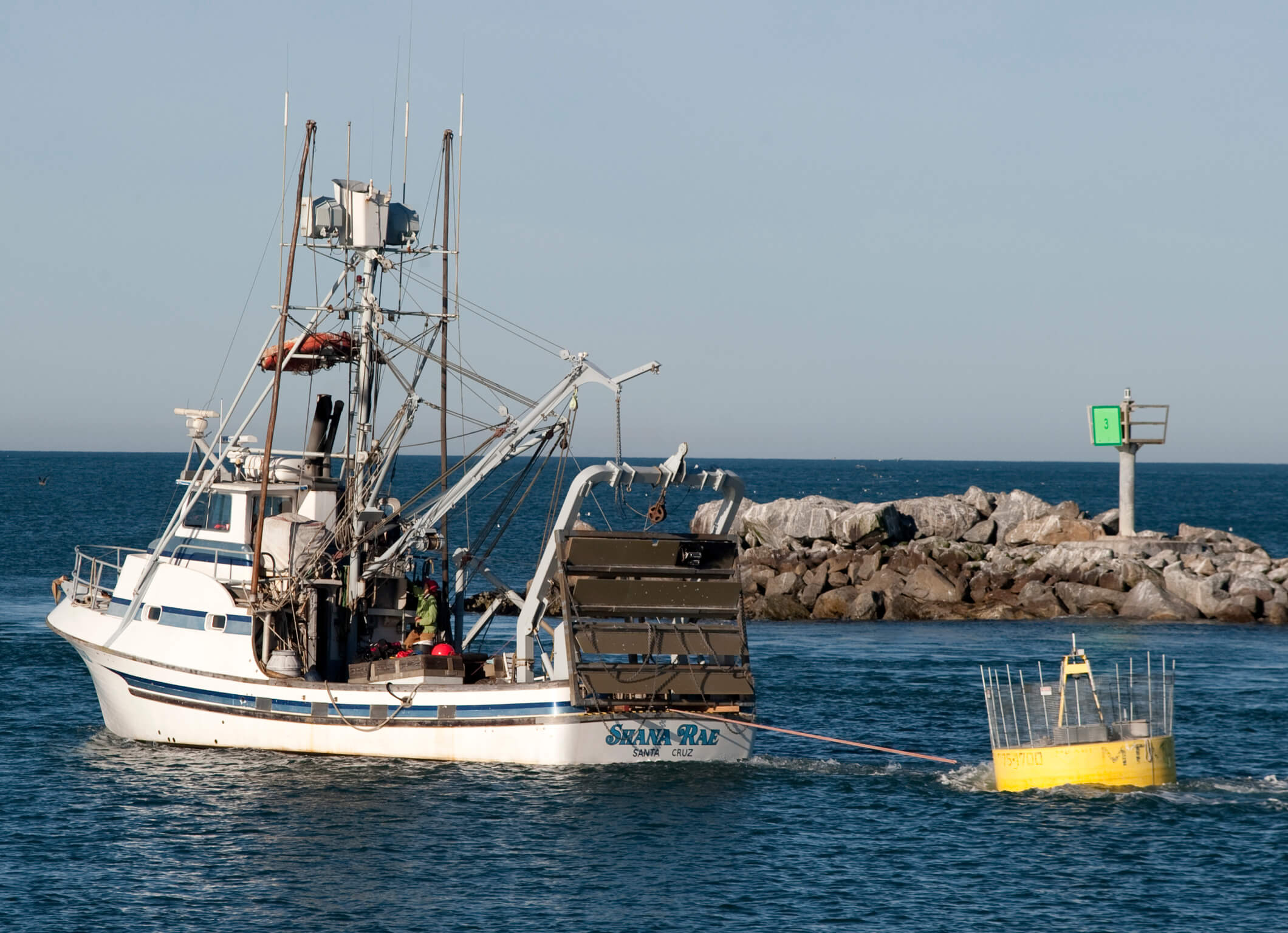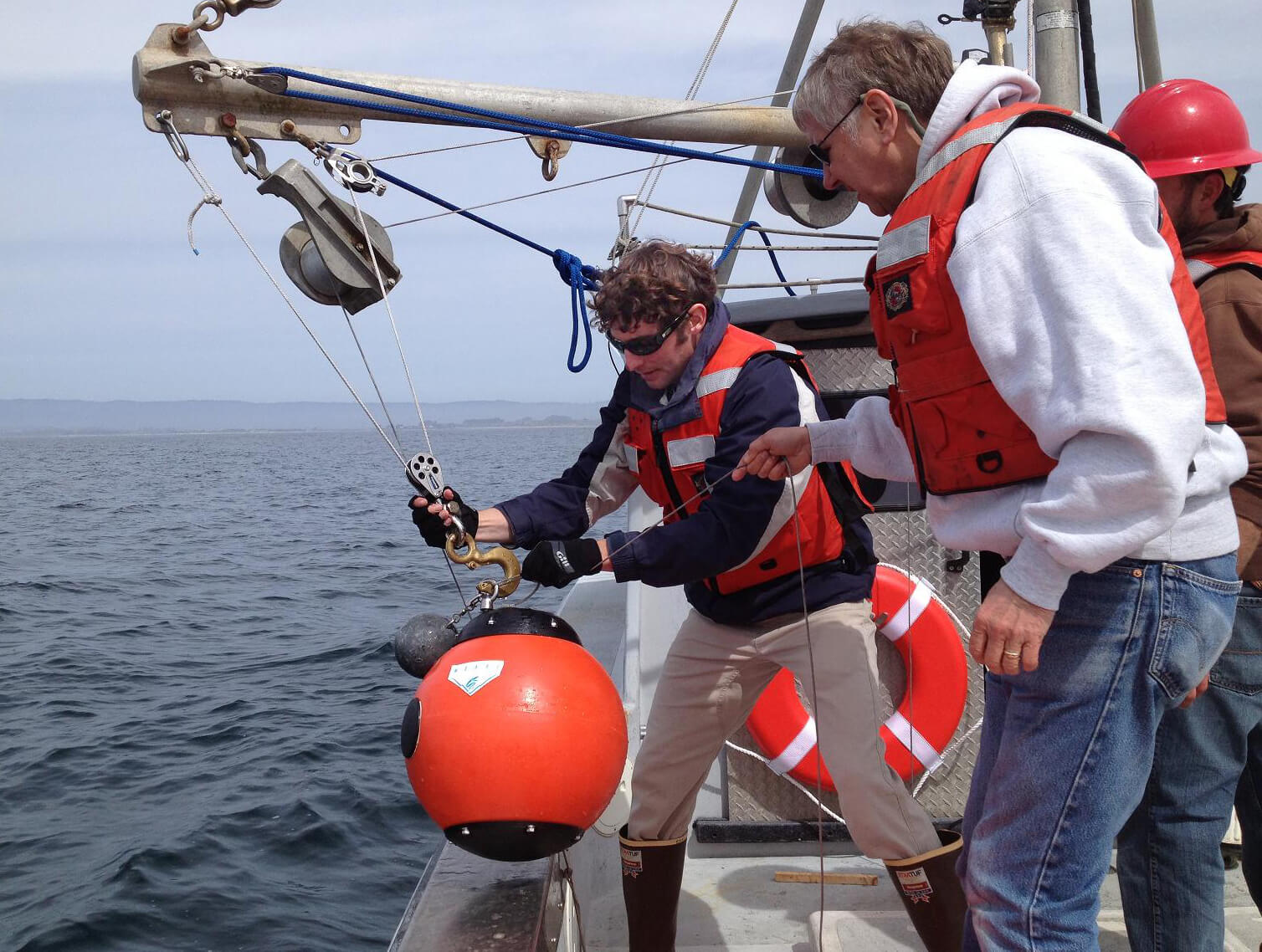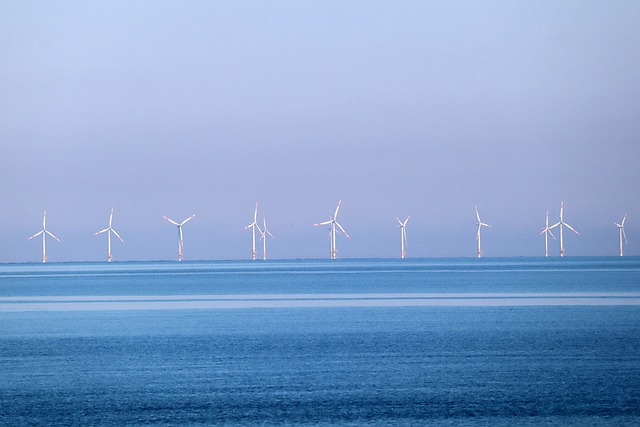
Why offshore wind?
Offshore wind will grow during the next four years. That requires a large ocean observing program and massive amounts of scientific information to understand the full ecosystem effects from wind farms, say, on marine life. For instance, BOEM may need to monitor fisheries, birds and mammals, but monitoring what is happening with ocean upwelling, or temperatures, gives resource managers the larger picture. And that requires having tested and accepted technology ready for the market. Bringing in managers, NGOs, or engineers to think about it now, helps us synchronize the need for an ocean monitoring solution with fully-tested and validated ocean instrumentation.
Synchro will design and implement a two-year field campaign evaluating technology in the context of what information is needed to make assessments before and after any impacts from offshore wind energy. This study will evolve our understanding at the ecosystem level by accelerating the transition of several observing technologies and data handling methods into an operational setting. Co-design across the full data lifecycle will involve expertise from engineers, scientists, data managers and data product developers including modelers, resource managers, and conservation groups.
This study describes the detailed trophic connections that underpin blue whale (Balaenoptera musculus) ecology in the California Current. Contemporary management of living resources has evolved from decision-making based on a somewhat simplistic food chain basis to a more holistic and integrated approach. Research that supports this latter approach highlights the connections between climate, weather, and wind-driven upwelling, and changes in nutrient availability for primary productivity, and how primary productivity moves from zooplankton and forage fishes to top predators including marine mammals and fish.
In the case of measuring the effects of offshore wind systems, such marine structures may have some economic and social welfare implications. Indeed, upwelling itself has been suggested as potentially being impacted by wind infrastructure at the scale of the Morro Bay wind energy area.


Examples of key issues under siting, permitting and operation include (Code of Federal Regulations, Title 30, §585):
- The potential effects on marine mammals and fish species from underwater noise generated by installation of wind turbine generator
- Potential displacement of essential activities of marine mammals/fish due to the presence of wind turbine generators and associated moorings/support structures and
- Marine mammal entanglement in mooring lines.
Co-design across the full data lifecycle involves expertise from engineers, scientists, data managers, and data product developers including modelers, resource managers, and conservation groups. Plans include small research vessel, aerial drone, mooring, and autonomous underwater vehicle work designed to cross-validate several observing modes and demonstrate potential for baseline and impact assessment in a setting similar to that expected for the offshore infrastructure. Cross-validation work is expected to compare various combinations of eDNA sampling, passive acoustic monitoring, animal tagging, as well as imaging of the surface ocean, water column, and seafloor. It is also expected to include at-sea exercises with research vessel support, high-resolution ocean modeling, along with ongoing observations occurring in the Monterey Bay area from Synchro, the Central and Northern California Ocean Observing System (CeNCOOS), and other efforts.

